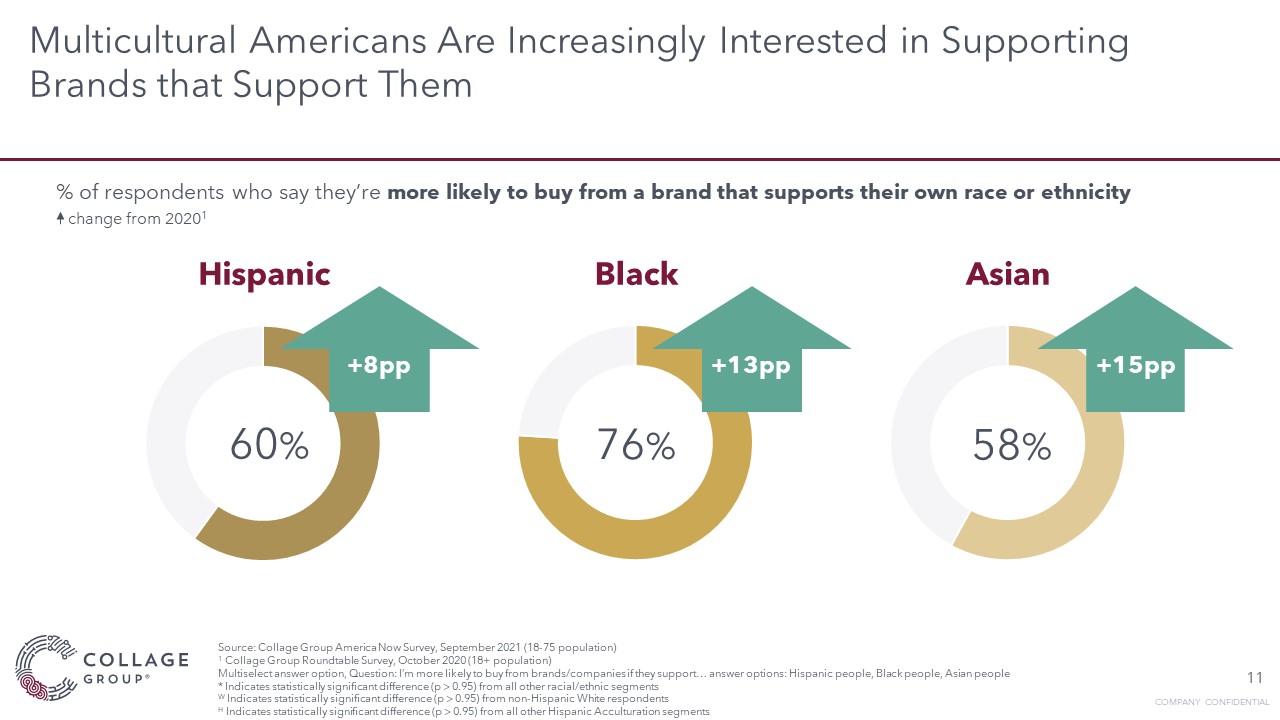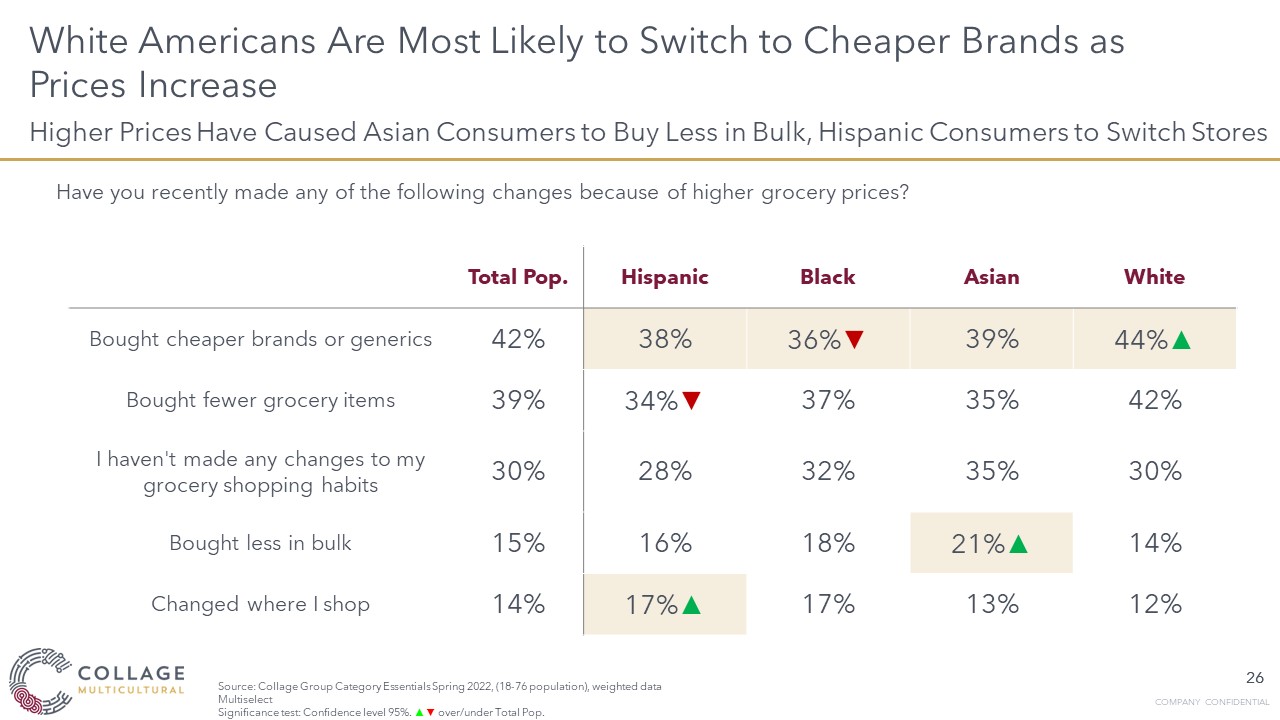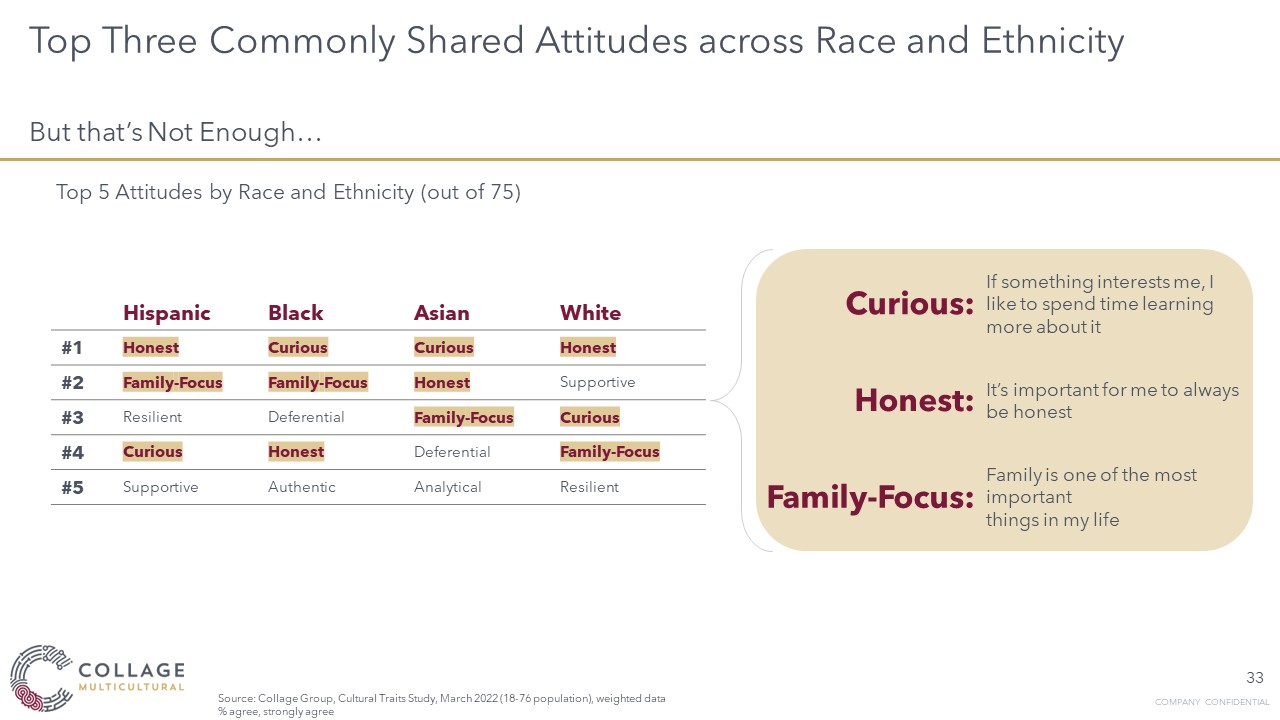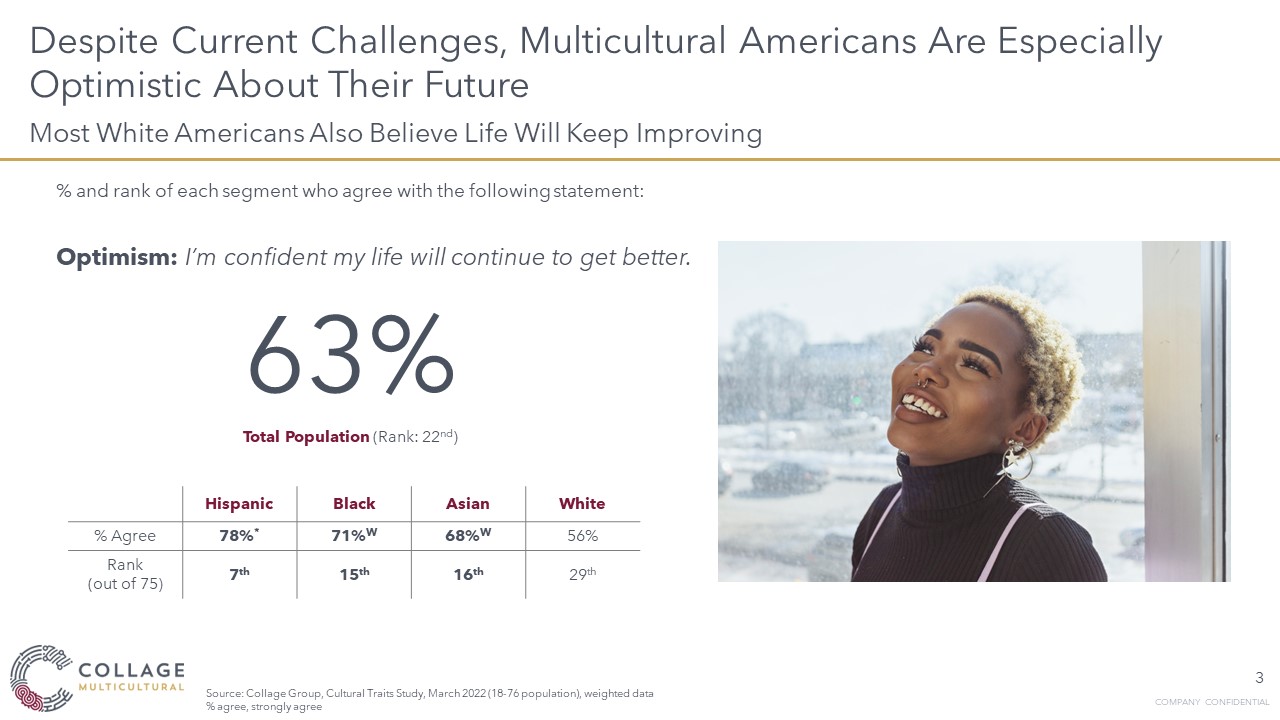Inflation is at a 40-year high, the stock market has entered bear market territory, and predictions of recession are growing in the media. Beyond Wall Street and media outlets, most Chief Marketing Officers also view inflation negatively with some considering plans to retrench in the upcoming months.1
To quickly adapt to the current economic reality and effectively engage American consumers, brands need clear insights on how spending is likely to shift and why. To help our members thrive in this increasingly competitive time, Collage Group is launching an urgent initiative into consumer attitudes and behaviors related to current events and the present economic situation. Our primary objective is to identify how people are currently responding to the economic situation, how they’re likely to respond if things get worse, and where and why they’re making tradeoffs. We’ll also provide insights into how consumers want brands to engage around pressing social issues such as abortion and gun violence.
But members shouldn’t wait until the August 9th webinar to act. Below are four key recommendations you need to keep in mind when building out your near-term marketing plans.
Key Recommendation #1: Guard against an uncertain future by putting multicultural segments at the center of your marketing efforts.
Not only are multicultural consumer segments irrevocably dominating US population and expenditure growth, according to our America Now study, they’re also increasingly likely to allocate their spend towards brands that embrace them specifically because of their diversity.

The modern American demographic and cultural landscape requires redefining the mainstream with multicultural segments at the center. There is no way around this imperative. You simply must make spending on multicultural segments non-negotiable in order to survive and flourish moving forward. And as the demographics of America continue to diversify, so should your marketing strategy.
Recommendation #2: It’s good to be realistic—just don’t get caught up in the doom loop.
The concerning media narrative around the economy obscures a pervasive lack of consensus among forecasters who are calculating a probability of recession anywhere from 15% to 40%—a very wide range (New York Times).
On one hand, oil price shocks and interest rate increases have been harbingers of recession, and consumer sentiment overall is hardly cheerful (University of Michigan). But on the other hand, previous years’ COVID stimulus checks continue to support consumer spending and the labor market is strong, possibly due to consumers’ current confidence in their ability to generate future income (New York Federal Reserve Bank survey).
Regardless of how things turn out, many people are feeling the pain and pressure of inflation. But that doesn’t mean they’re hopeless about the future. After all, optimism is a strong trait among Americans, especially multicultural Americans. You can connect with consumers by maintaining a realistic, yet positive message.
Key Recommendation #3: Understand how category spending tradeoffs differ across racial and ethnic segments.
Since each segment comes to decision-making with unique motivations and Group Traits, spending tradeoffs and solutions also differ. Marketers should embrace nuance and avoid a one-size-fits-all approach by better understanding how cultural differences translate to spending differences.
One example from our recent Category Essentials study sheds light on how consumers across race and ethnicity are adjusting to higher grocery prices. While the most popular responses were to simply choose cheaper brands or buy fewer items, Hispanic, Black, and Asian American shoppers were more likely to report changing where they shop and reducing bulk purchases. Brands must be prepared to respond to consumer spending tradeoffs that rely on a wide range of strategies.

Key Recommendation #4: Prepare for greater competition for consumer dollars by incorporating cultural nuance into your marketing strategies.
As the economic situation gets worse, one thing is clear: brands will be fighting harder for fewer dollars. So, you’ll need to pull every lever you can.
Traditional expenditure models incorporate a range of fact-based components including inflation, employment, real income, availability of credit, tax rates, supply surplus or shortfall, and the effect of substitutes and innovation. But human behavior isn’t defined by these inputs–they’re only part of the equation.
The impact of subjective factors such as enjoyment, short-sightedness, generosity, miscalculation, respect for tradition, symbolism, and others play a role in how people choose to spend their dollars. That’s one of many reasons why an understanding of cultural diversity is so critical. Our Group Traits research provides insight into the nuances that differentiate segments, as well as the perspectives that are broadly shared. This insight can help you craft more engaging and appealing messages to capture consumer attention.

Collage Group’s consumer research is here to help you prepare for an uncertain future. Click on to the referenced studies throughout and sign up for our Current Economic and Social Issues webinar on August 9th, 2022 for insights on how to position your brand for success in these uncertain times.







